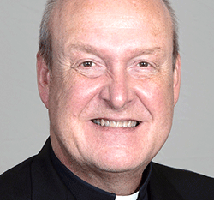
History of the Jubilee Year
The term “Jubilee” refers to a special year that is marked by the blowing of the yobel, or ram’s horn, which is used to announce the Day of Atonement (Yom Kippur). This Jewish holiday is observed annually, but it holds particular significance when it marks the start of a Jubilee year. The Bible specifies that a Jubilee year should be observed every 50 years, as this would be an “extra” year occurring every seven weeks of seven years (i.e., every 49 years; Leviticus 25:8-13). Although challenging to organize, the Jubilee year was meant to be a time for restoring right relationships with God, with one another, and with all creation. This was achieved through the forgiveness of debts, the return of misappropriated land, and a fallow period for the fields.
The Gospel of Luke, quoting the prophet Isaiah, describes Jesus’ mission as follows: “The Spirit of the Lord is upon me, because he has anointed me to bring good news to the poor. He has sent me to pro-claim liberty to captives and recovery of sight to the blind, to let the oppressed go free, and to proclaim a year acceptable to the Lord” (Luke 4:18-19; Isaiah 61:1-2). Jesus embodied these words in his daily life, through his interactions and relationships with others, which resulted in liberation and conversion.
In 1300, Pope Boniface VIII initiated the first Jubilee, also called a “Holy Year,” as it is a time for God’s holiness to transform us. The frequency of Holy Years has changed over time. Initially celebrated every 100 years, the interval was shortened to 50 years by Pope Clement VI in 1343 and then to 25 years by Pope Paul II in 1470. There have also been “extraordinary” Holy Years, such as the one called by Pope Pius XI in 1933 to commemorate the 1900th anniversary of the Redemption and the Year of Mercy pro-claimed by Pope Francis in 2015. The way Jubilee Years are observed has also evolved. Originally, the Holy Year involved a pilgrimage to the Roman Basilicas of St. Peter and St. Paul. Later, other elements were added, such as the Holy Door. Participation in the Holy Year grants one a plenary indulgence.

